The Royal Yacht Britannia: How The Queen created a floating home and theatre of state
The Queen was the best-travelled monarch in British history. John Goodall looks at the story of the Royal Yacht Britannia, now permanently moored in Leith, Edinburgh. Photographs by Paul Highnam.
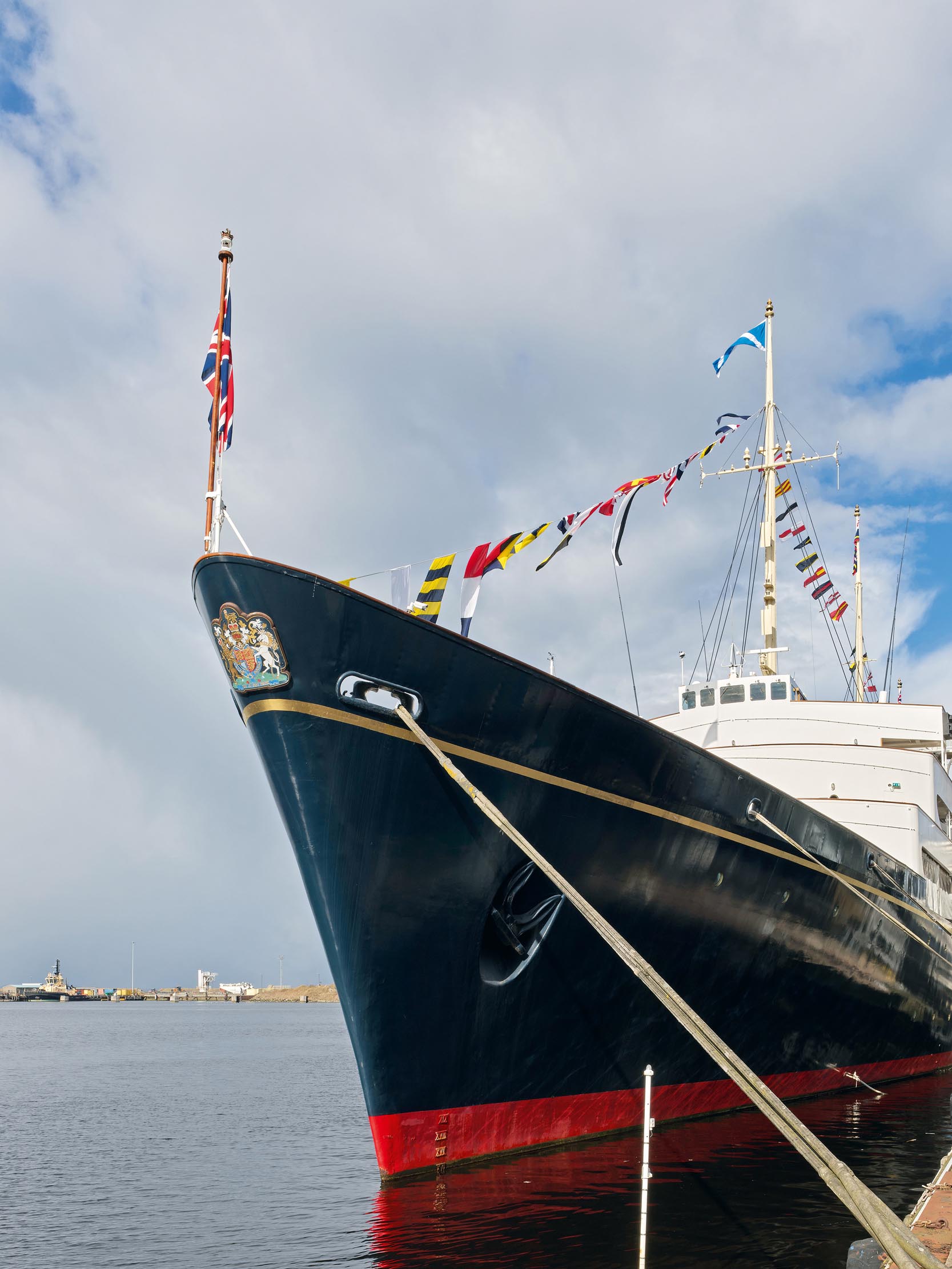

‘I name this ship Britannia. I wish success to her and to all who sail in her.’
With these words, on April 16, 1953, The Queen released a bottle of ‘Empire wine’ — a post-war economy in place of Champagne — to launch the Royal Yacht Britannia. The name of the ship had been kept secret and, hearing it declared, the assembled crowd gave a huge roar of approval. To the sound of more cheers, and as a band played Rule Britannia, the 4,000-ton hull, No 691, slid slowly down the slipway from the Clydebank shipyard of John Brown & Co, into the river, and was towed by tugs to the fitting-out basin upstream.
From as early as 1939, bids had been invited to construct a new Royal Yacht capable of long-distance travel. War and austerity put paid to the initiative, but a visit by George VI to South Africa in 1947 on board the battleship HMS Vanguard revived it. As The Queen commented at Britannia’s launch, George VI ‘felt most strongly, as I do, that a yacht was a necessity and not a luxury for the Head of our great British Commonwealth, between whose countries the sea is no barrier, but the natural and indestructible highway’.
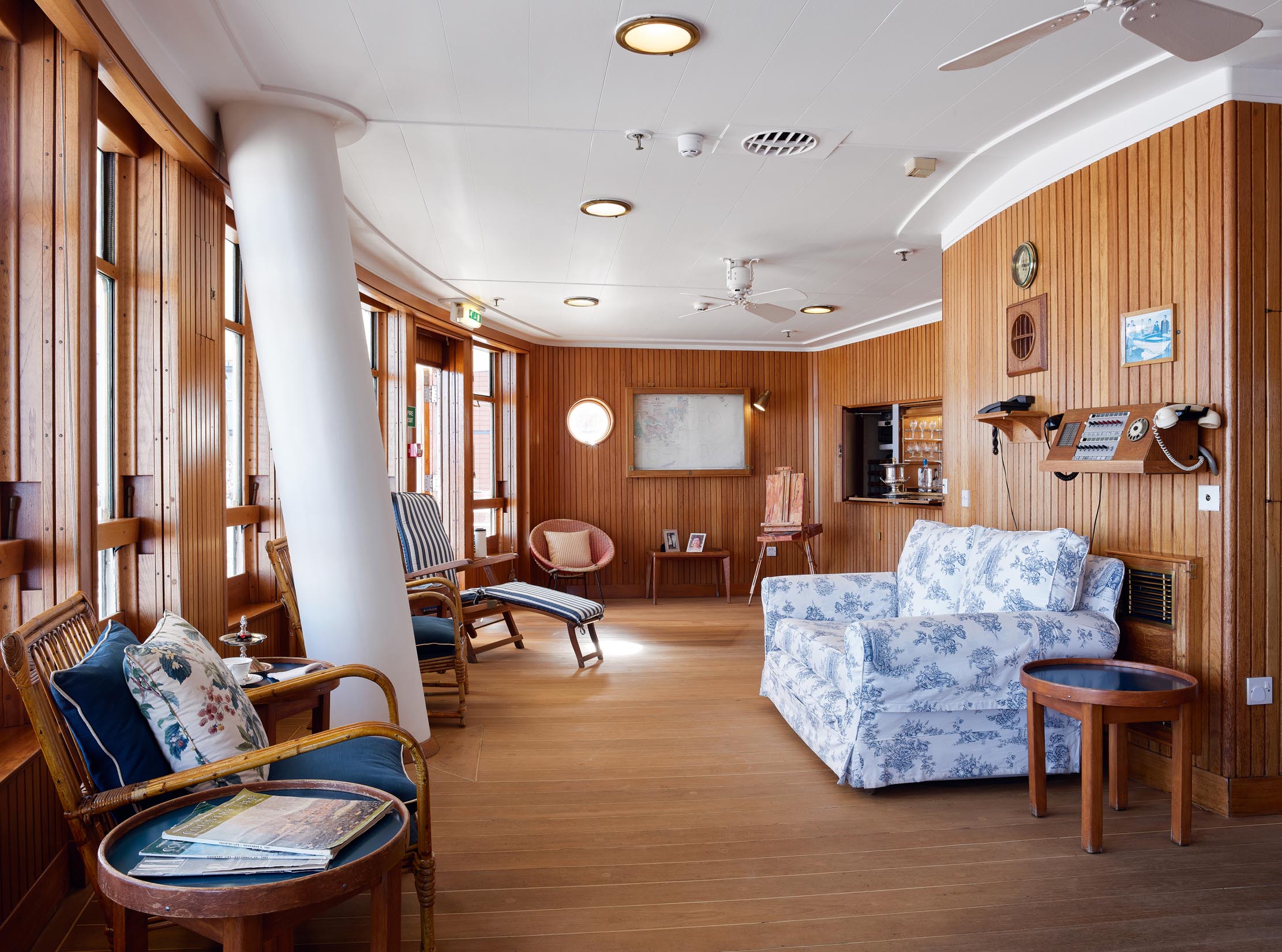
In October 1951, therefore, the Labour Prime Minister Clement Attlee announced the government’s intention to build a yacht capable of conversion into a hospital ship in time of war. A General Election, however, almost immediately passed responsibility for realising the £2.1 million project to a Conservative government under Sir Winston Churchill and the King authorised the commission in writing on February 5, 1952, the day before he died. Britannia claims to be the 83rd Royal Yacht in succession to Mary, which was presented to Charles II by the people of Amsterdam at the Restoration in 1660. The first steam-powered Royal Yacht was launched in 1843.
Both the Duke of Edinburgh — himself, of course, a naval officer with a technical interest in, and understanding of, ships — and The Queen were closely involved in the design and decoration of Britannia. As the Duke explained in an interview in 1995, she ‘was rather special as far as we were concerned because we were involved from the very beginning in organising the design and furnishing and equipping and hanging the pictures and everything else… All the other places we live in had been built by predecessors’. This close involvement makes the royal apartment within the yacht one of the most coherent surviving expressions of the royal couple’s personal interests and taste.
One outward mark of their involvement in Britannia is the deep blue of the hull (Fig 2), which is borrowed — together with its enlivening band of gold leaf — from the Dragon Class racing yacht Bluebottle, which was a wedding gift in 1948. The main interiors of the yacht, meanwhile, were created with the assistance of Sir Hugh Casson, who had recently been knighted for his work as director of architecture for the Festival of Britain.
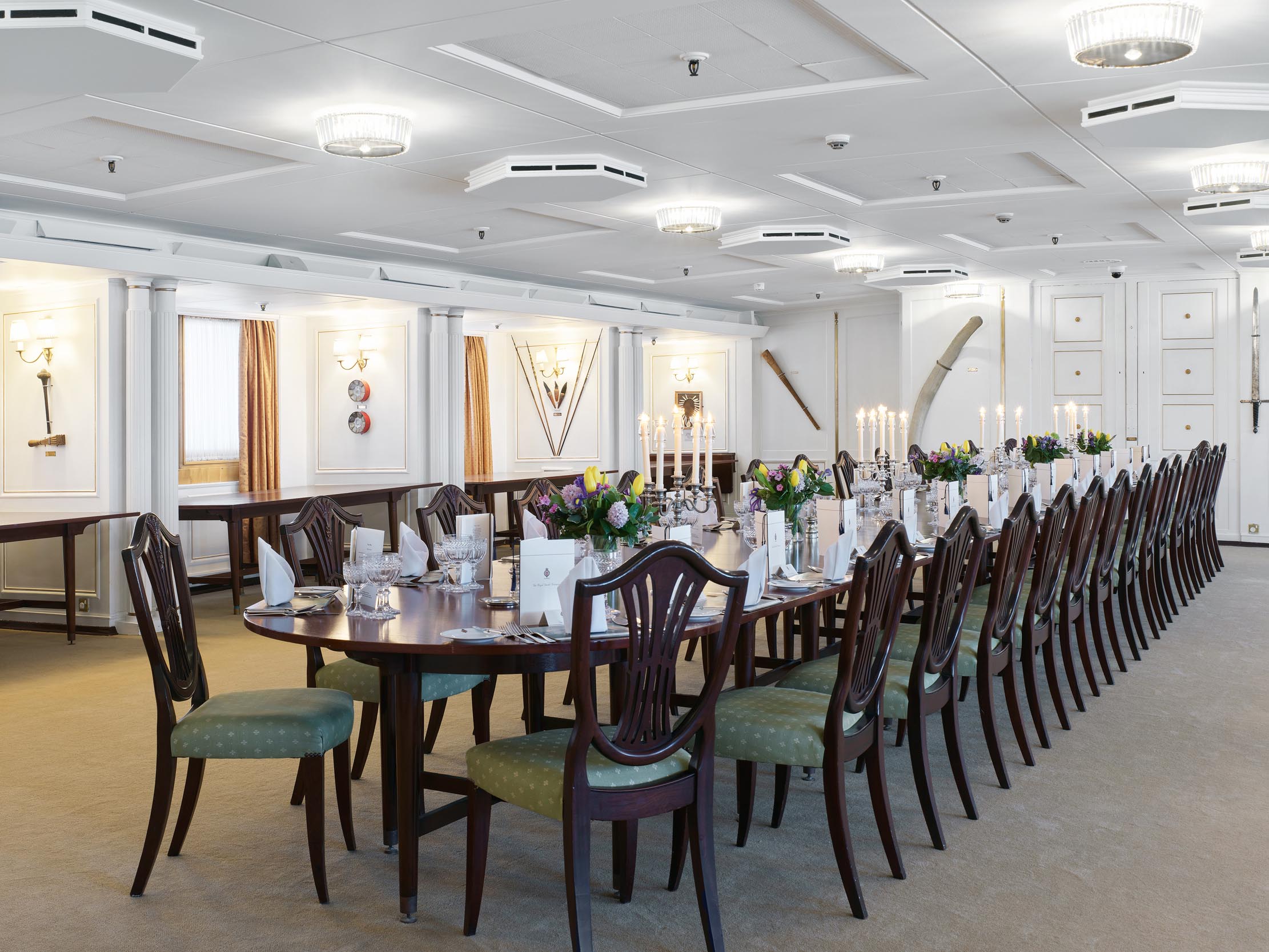
By Casson’s account — recorded in a series of interviews in early 1990 for the National Life Stories of the British Library Oral History Project — the dockyard had initially turned to the established local firm of McInnes Gardner to furnish the yacht. The Duke of Edinburgh, however, judged its Louis XVII-style proposals as too much in the character of a transatlantic liner. He requested something simpler and asked the furniture designer Gordon Russell for advice. Russell suggested Casson on the strength of his Festival of Britain experience. By happy coincidence, Casson loved liners, having spent part of his childhood in Southampton.
Sign up for the Country Life Newsletter
Exquisite houses, the beauty of Nature, and how to get the most from your life, straight to your inbox.
Casson had never properly met his royal clients before this commission and time was of the essence. After a sequence of interviews with the Duke of Edinburgh, the Admiralty and a representative of McInnes Gardner, he quickly produced a series of large watercolour sketches of the main rooms that were posted off to the Royal Family at Balmoral. That done, and in company with John Wright, an architect and furniture designer in his office, he visited the previous Royal Yacht — Victoria and Albert III, built in 1899 and retired in 1937 — to salvage fittings. These included her picture collection, china, silver, linen and glass. Two ornate compasses or binnacles were also rescued, but these, in fact, originally came from a yet earlier vessel, Queen Victoria’s Royal George.
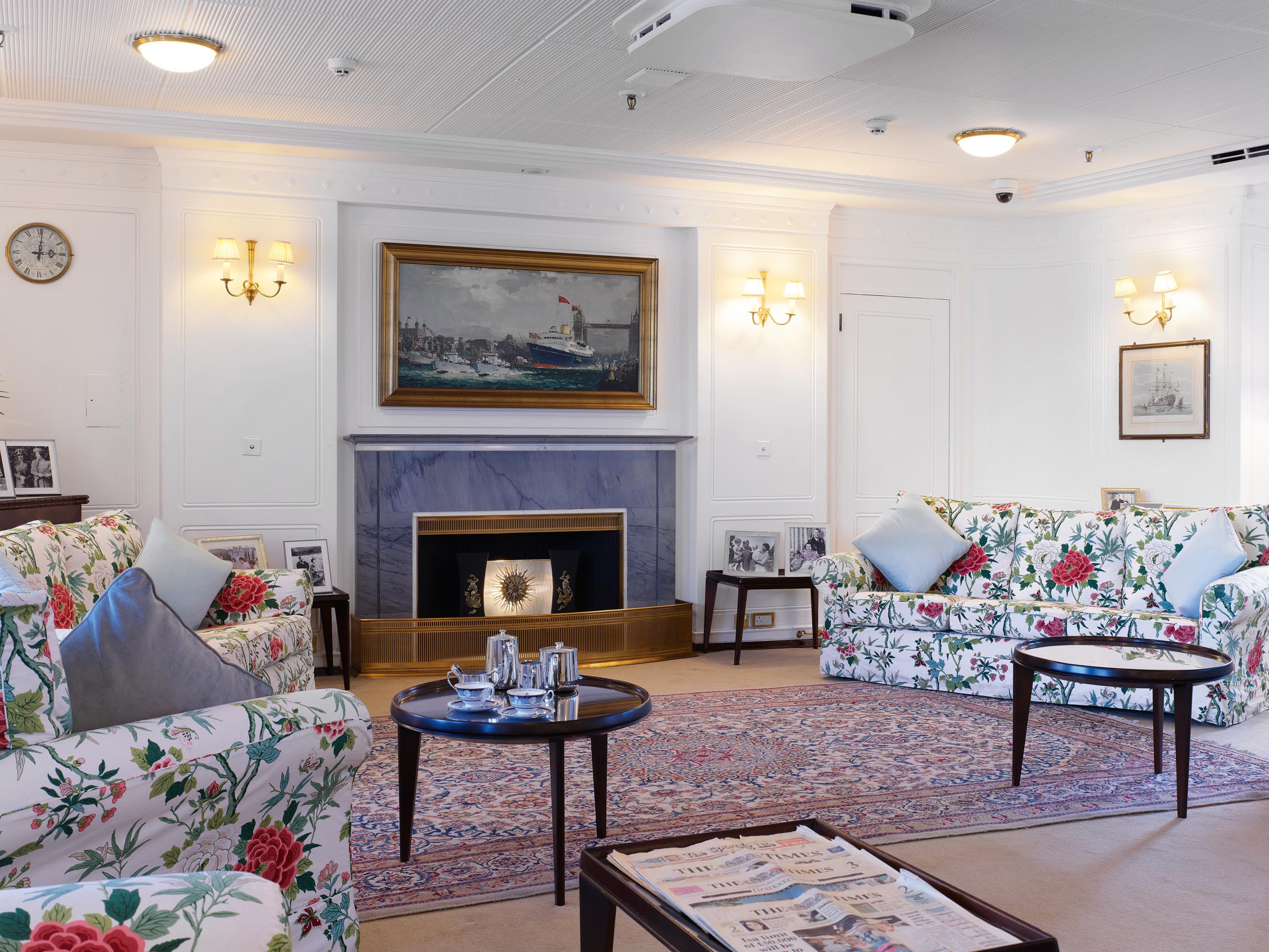
Soon afterwards, Casson, Wright and a Mr McInnes Gardner of the eponymous Glasgow firm, were summoned to Balmoral, where they arrived one morning at breakfast time. There was an informal meeting soon afterwards, with The Queen sitting by the fire and Princess Anne combing her hair, at which his royal clients professed themselves delighted with the designs. They requested, however, that the watercolours be laid out for further discussion after the immediate business of the morning, a church service.
What discussion the drawings elicited is unclear, but Casson makes it apparent that the Duke of Edinburgh was otherwise a crucial point of connection in the design process and that the choice of fabrics was taken by the royal couple. The next day, Casson was dismissed with an instruction to get on with the work and send samples of materials. He was also given a brace of pheasant bearing a prominent label ‘From The Queen’, which he hung ostentatiously from the luggage rack of his train carriage as he travelled south.
Casson’s stated aim in Britannia was to create a country-house interior in the yacht, although the conscious simplicity perhaps more powerfully evokes the residence of a British colonial governor or High Commissioner. He proposed a single colour carpet throughout, white walls, polished mahogany doors and some gilding of highlights. His accomplished and loosely worked watercolour sketches have the effect of bringing the picture hang and the furniture to the fore, setting chintz patterns and pastel tones against the clean lines and bold details of the architecture. To a striking degree, and despite repair and renovation, the interiors of the yacht still resemble these views.
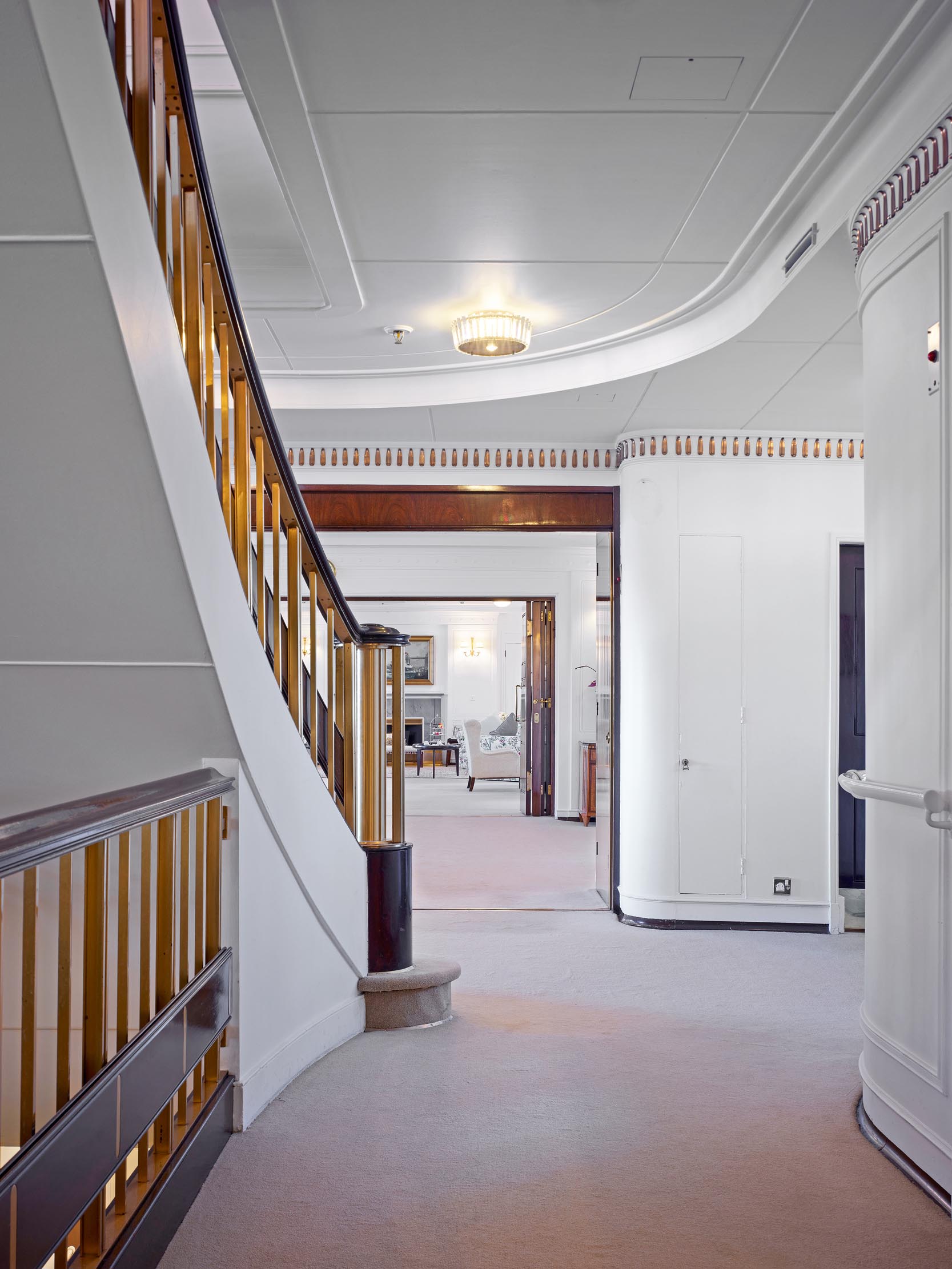
Incorporated within the Upper Deck are the State Drawing Room — the fireplace within it had to be fitted with an electric fire because of naval regulations (Fig 4) — and the State Dining Room (Fig 3). Between them is an anteroom and the main stair (Fig 5), as well as sitting rooms for the Duke and The Queen (Fig 6). The stairwell also incorporates the formal entrance to the yacht, making this the hallway of the royal apartment. On the Shelter Deck above are the private family rooms, including the Duke’s and The Queen’s bedrooms (Fig 8), each with its own bathroom. There is also the Sun Lounge (Fig 1), a room with large windows that opens onto the verandah deck towards the stern.
The royal apartment occupies about a third of the yacht and has its own connected cabins, services and galley. All the remainder was organised in the manner of a working Royal Navy vessel. To man the ship was a crew of up to 220 yachtsmen and 21 officers under the command of an admiral or commodore (rather than a captain). The crew was divided into several departments, including a Royal Marine band. There is a bridge, wheelhouse, accommodation, wardroom and messes, a sick-bay and storage. The diesel engines drove two geared steam turbines that gave her a top speed of 22½ knots and a range of about 2,196 miles at 20 knots.
Much about the life of Britannia was unusual. The uniform was distinctive, with such details as a silk bow at the back of the trousers. Gym shoes were worn on deck and, to avoid noise, there was no tannoy system or shouting. Instead telephones and hand signals were used to communicate. Because of its role as a floating palace and the need for impeccable clothes, the laundry was particularly important. In addition to the Royal Barge — the original from Victoria and Albert III was replaced in 1964 by one built by Camper Nicholson — the yacht also had a garage for either a Land Rover or The Queen’s Phantom V Rolls Royce.
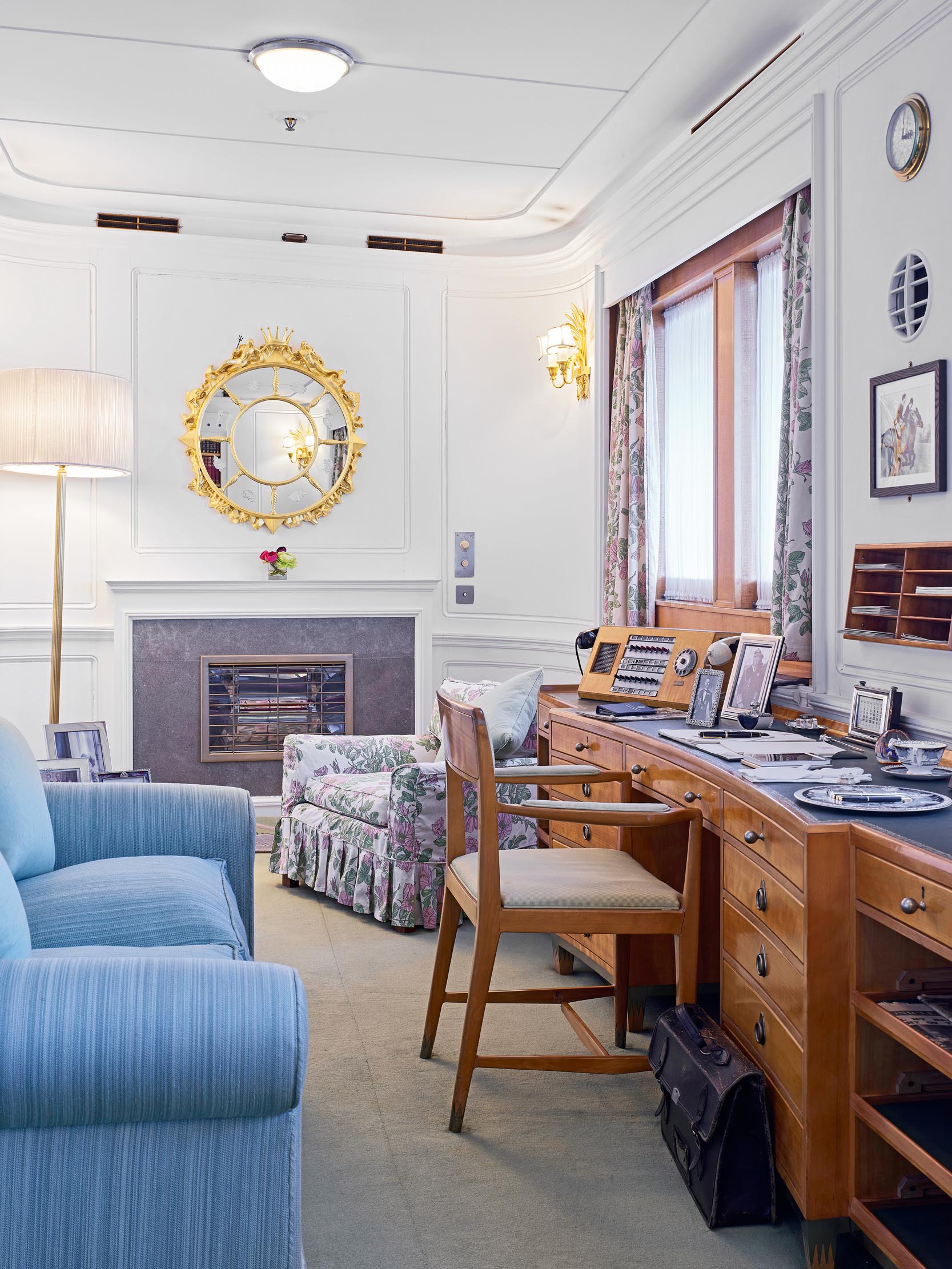
In November 1953, as work to Britannia was still under way, The Queen and the Duke of Edinburgh set off on their first and longest Commonwealth tour aboard the passenger liner Gothic. Their new yacht set out to meet them as they returned, carrying the young Prince of Wales and Princess Anne. The family party embarked from Tobruk on May 1, 1954 and returned to Britain, picking up Churchill (and Casson) in the Solent. Having reviewed the fleet, Britannia sailed into the Port of London to public welcome. A painting of the yacht passing beneath Tower Bridge on that occasion was later hung in pride of place over the drawing-room fireplace.
For the next 44 years, Britannia worked busily in the service of Britain and the Commonwealth and played a role in more than 700 royal visits. In the process, she served not only as a means of transport, but as a home and a theatre of state. One of her regular duties was an annual summer cruise taking the Royal Family from the Cowes Regatta off the Isle of Wight to the Western Isles of Scotland. She also acted as a honeymoon retreat for several royal couples. The Queen was seen to relax on board in a way that was impossible elsewhere.
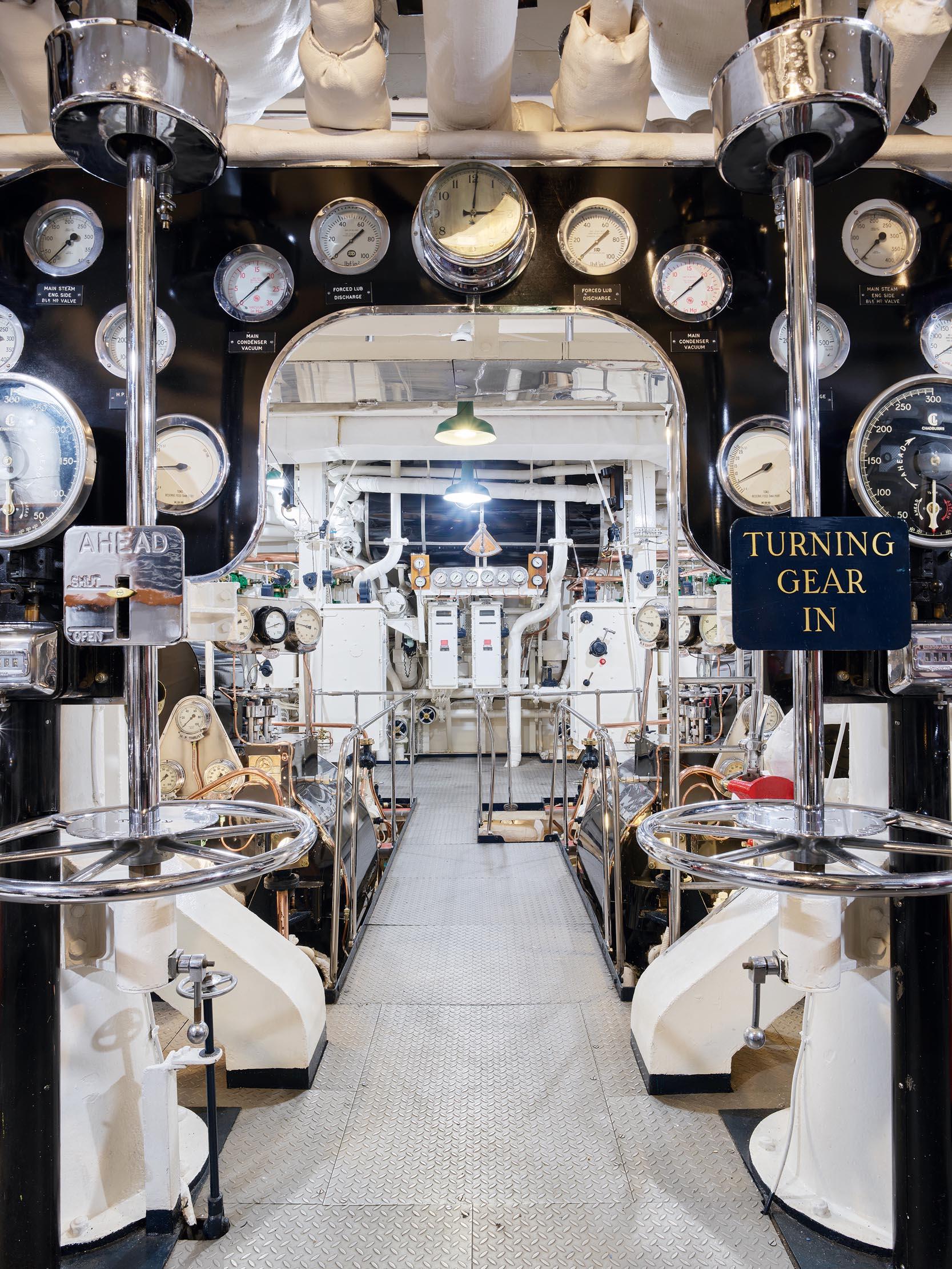
In 1994, when on a Caribbean trip, Britannia passed her millionth nautical mile and there was a celebration in the engine room (Fig 7), where The Queen and the Duke cut a ribbon and a cake. By then, however, she was becoming a dated vessel and, in 1995, a decision was taken by the Conservative Government of John Major that Britannia should not sail beyond 1997. This opened up discussions on the creation of a ‘cost-effective elegant royal yacht’, a project rather awkwardly compressed into the acronym CELERY. The idea of a replacement for Britannia was eventually incorporated into the Conservative manifesto of 1997, but with the Opposition never having been consulted, the provision of a new yacht now became a heated political issue.
Following the Labour general election victory that year, therefore, the idea of replacing Britannia was scrapped. Tony Blair made a visit to the yacht soon afterwards and has been quoted as saying that he regretted the decision as soon as he stepped on board.
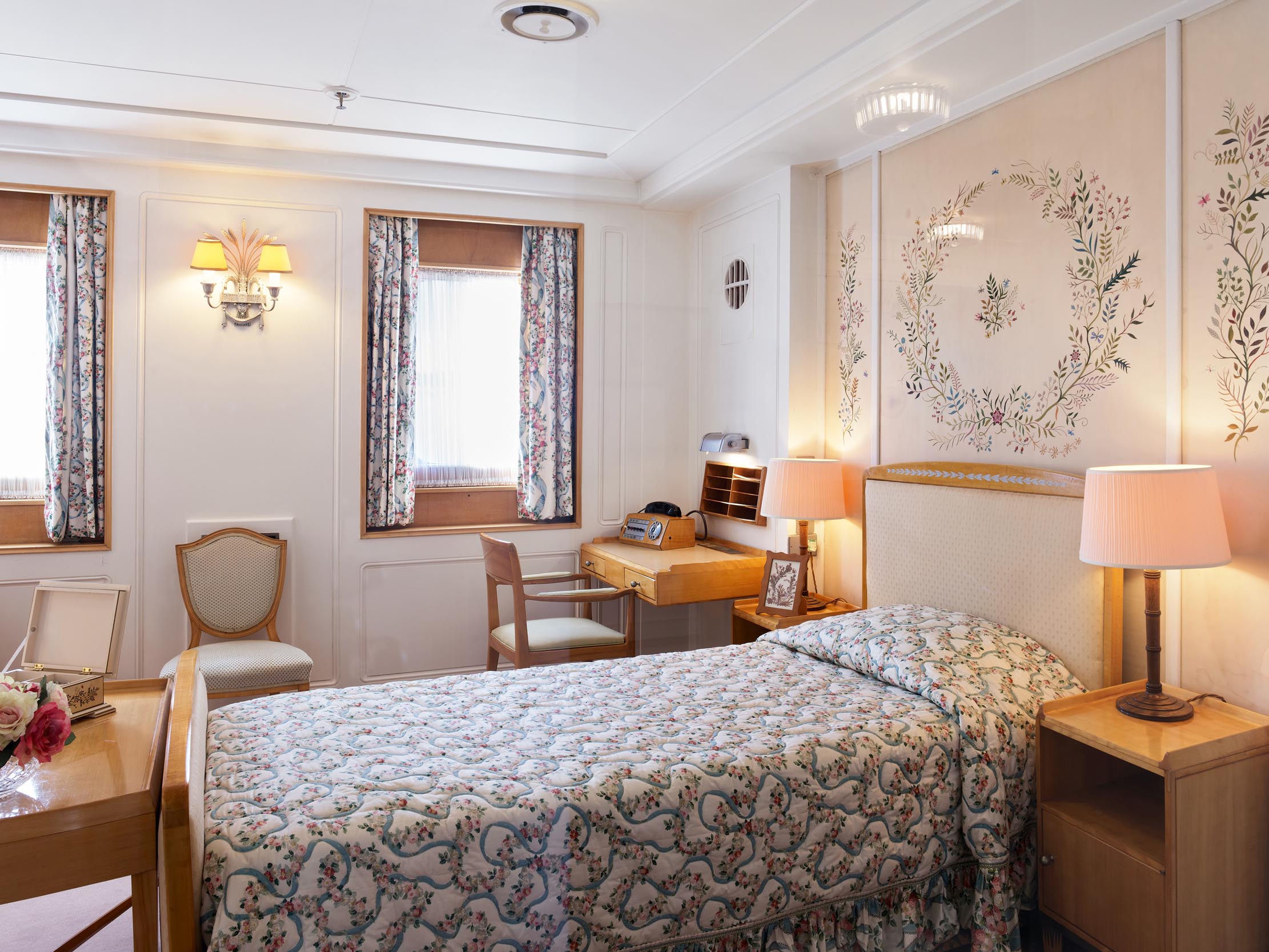
The fate of Britannia, however, was by now sealed. On June 30, 1997, she performed her final state role, in the handover of Hong Kong to China, carrying the governor out of the harbour. She returned to Britain to be decommissioned at Portsmouth on December 11, 1997. After a gathering of the Royal Family on board, The Queen was piped ashore for the last time at exactly 15:01. The time is still displayed on all the clocks onboard. In a rare display of emotion, she was seen to shed a tear for the ship that had been her creation and home for so long.
In the past, Royal Yachts had either been scuttled or broken up. In the case of Britannia, however, the Government invited bids from UK organisations to present her to the public as a tourist attraction. From the seven bids considered, that of Edinburgh was judged the most successful and, since July 5, 1998, the yacht has been berthed beside Ocean Terminal shopping centre at Leith under the care of the The Royal Yacht Britannia Trust. She has not only proved a popular tourist attraction, but continues to operate as a venue for private hire. On display at Britannia are three royal sailing vessels, The Queen’s ocean-racing yacht Bloodhound, Bluebottle and Coweslip. The trust also owns a former lighthouse supply vessel, Fingal, now converted into Scotland’s only luxury floating hotel.
The political battle over the question of whether Britain should have a Royal Yacht continues into this Platinum Jubilee year. Whatever the outcome, Britannia deserves to be better known as a remarkable surviving example of taste at the start of Britain’s second Elizabethan Age.
For further information and opening hours, visit www.royalyachtbritannia.co.uk
This article was originally published in June 2022.
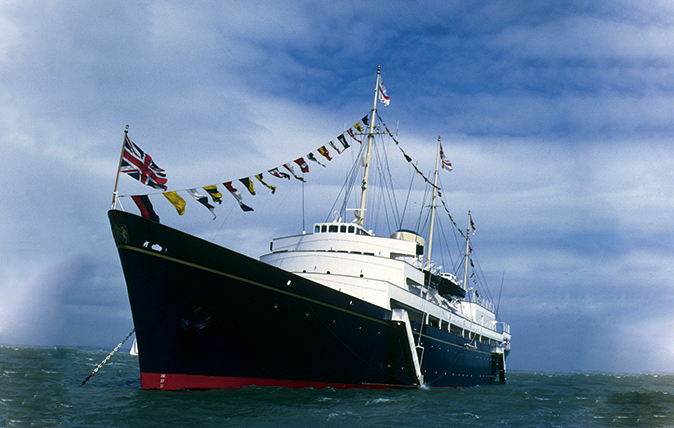
Running a tight ship: 14 facts about the HMY Britannia
For The Queen, the tourist attraction Britannia was once a home away from home. Here are 14 facts about this
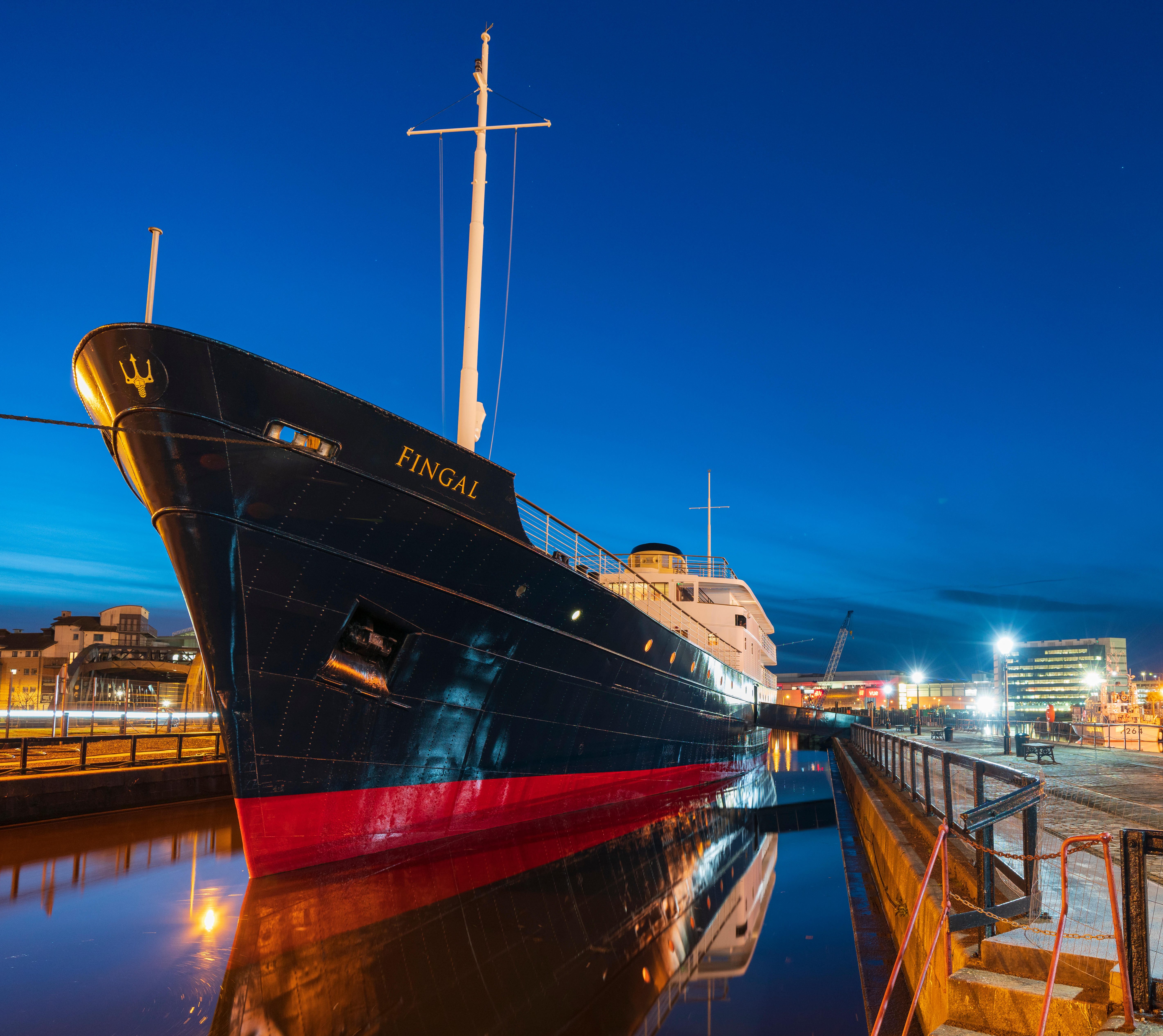
Fingal, Edinburgh: A floating hotel with royal connection, run by the trust who look after HMY Britannia
The Royal Yacht Britannia was long ago decommissioned but has now become a top attraction in Edinburgh — and now the

John spent his childhood in Kenya, Germany, India and Yorkshire before joining Country Life in 2007, via the University of Durham. Known for his irrepressible love of castles and the Frozen soundtrack, and a laugh that lights up the lives of those around him, John also moonlights as a walking encyclopedia and is the author of several books.
-
 Why British designers dream up the most desirable hotels
Why British designers dream up the most desirable hotelsWhen it comes to hotel design, the Brits do it best, says Giles Kime.
By Giles Kime Published
-
 The five minute guide to 'The Great Gatsby', a century on from its publication
The five minute guide to 'The Great Gatsby', a century on from its publication'The Great Gatsby' sold poorly the year it was published, but, in the following century, it went on to become a cornerstone of world literature.
By Carla Passino Published
-
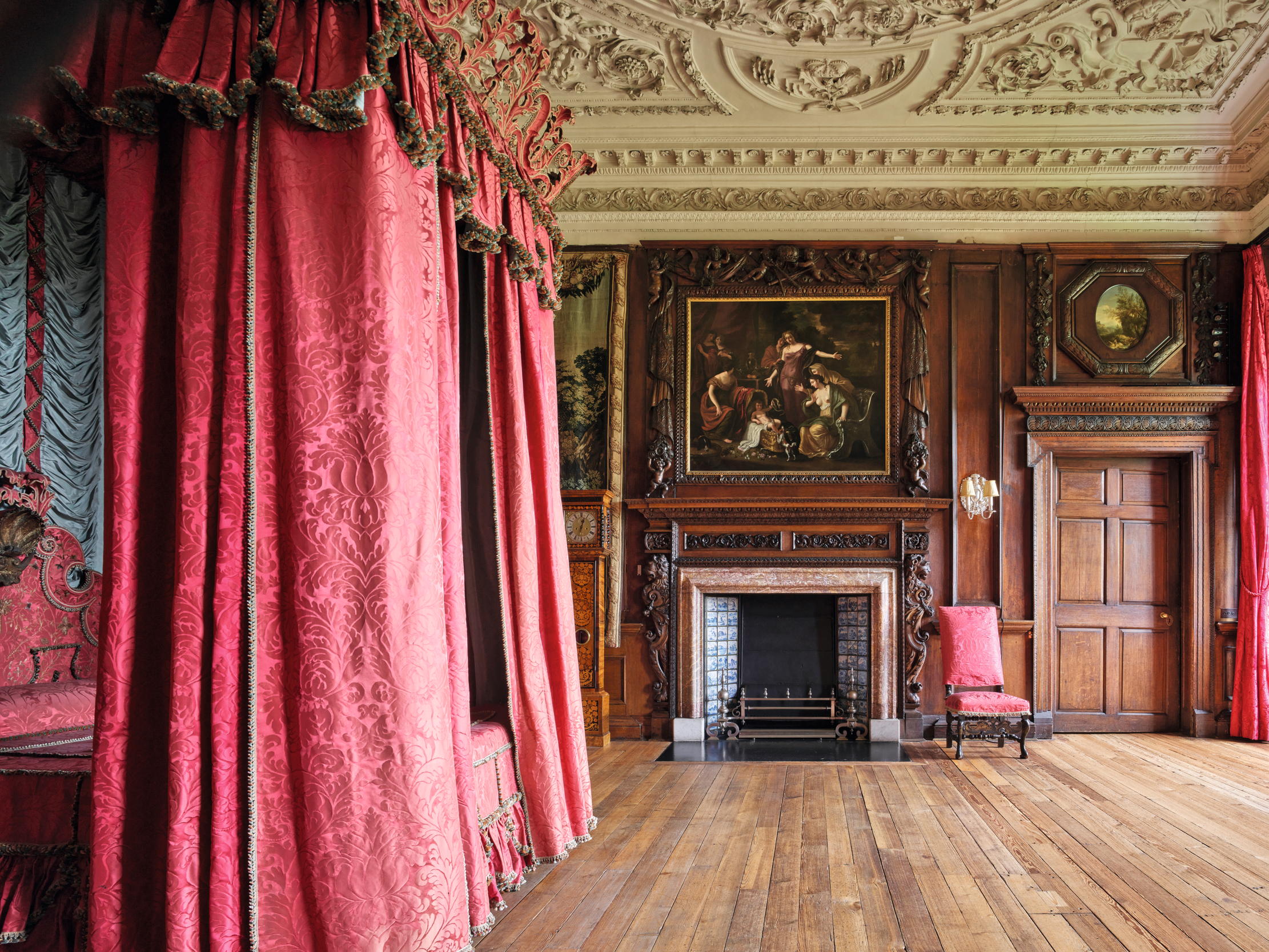 Holyrood: Inside The King's official residence in Scotland, from throne room to the bed chamber of Mary, Queen of Scots
Holyrood: Inside The King's official residence in Scotland, from throne room to the bed chamber of Mary, Queen of ScotsHolyrood — or, to give it its full title, The Palace of Holyroodhouse — is the official residence in Scotland of His Majesty King Charles III. To coincide with the publication of a new history of the palace, John Goodall offers an overview of the creation, abandonment and rebirth of this working royal residence over the past 900 years. Photographs by Paul Highnam for Country Life.
By John Goodall Published
-
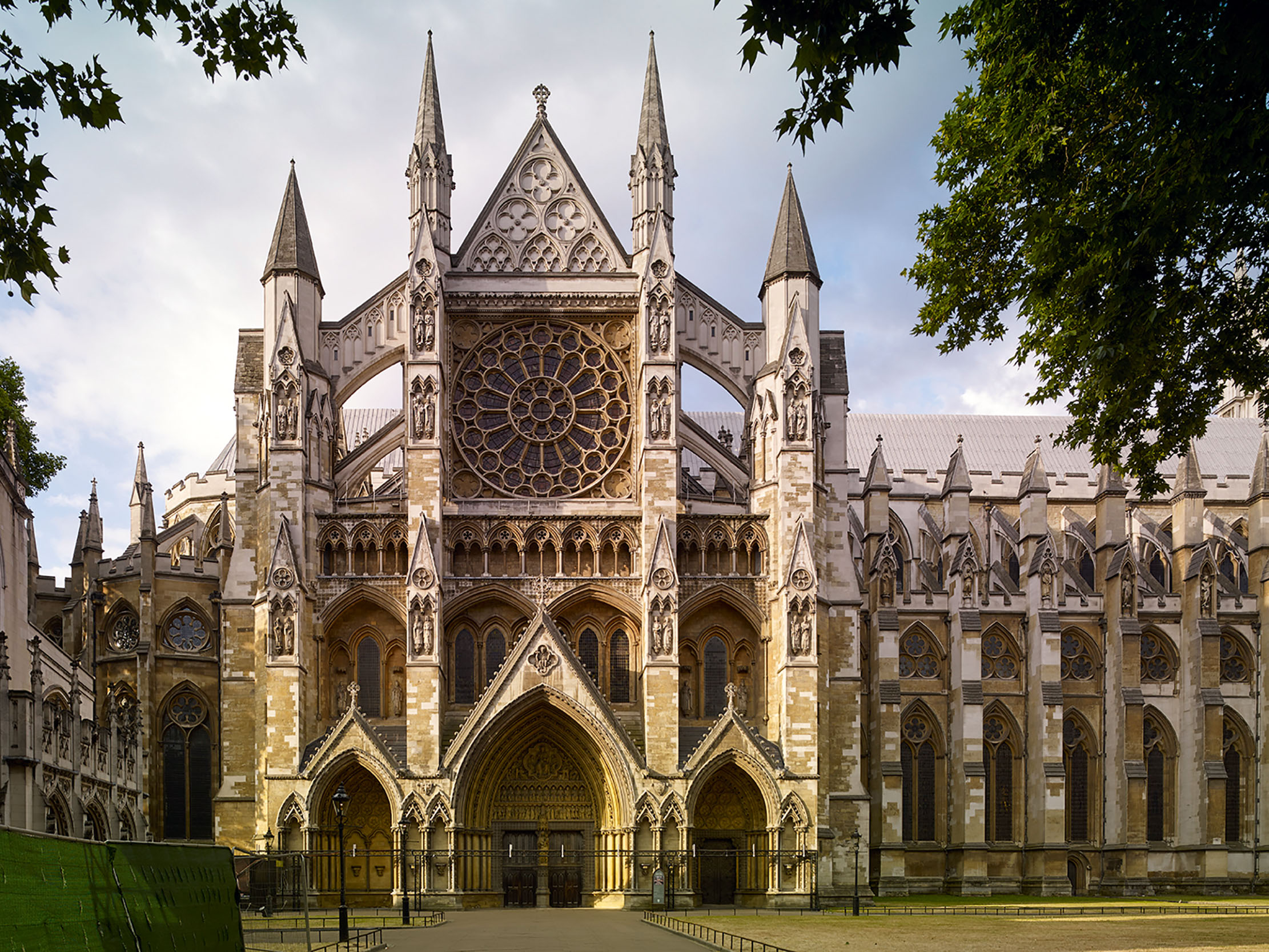 Westminster Abbey: 1,000 years of coronations, from King Harold and William the Conqueror to Elizabeth II and Charles III
Westminster Abbey: 1,000 years of coronations, from King Harold and William the Conqueror to Elizabeth II and Charles IIIThe setting of Charles III’s crowning in Westminster Abbey in London lends grandeur and history to this great ceremony. John Goodall considers the evolution of this remarkable building and its role in celebrating the authority and antiquity of the monarchy.
By John Goodall Published
-
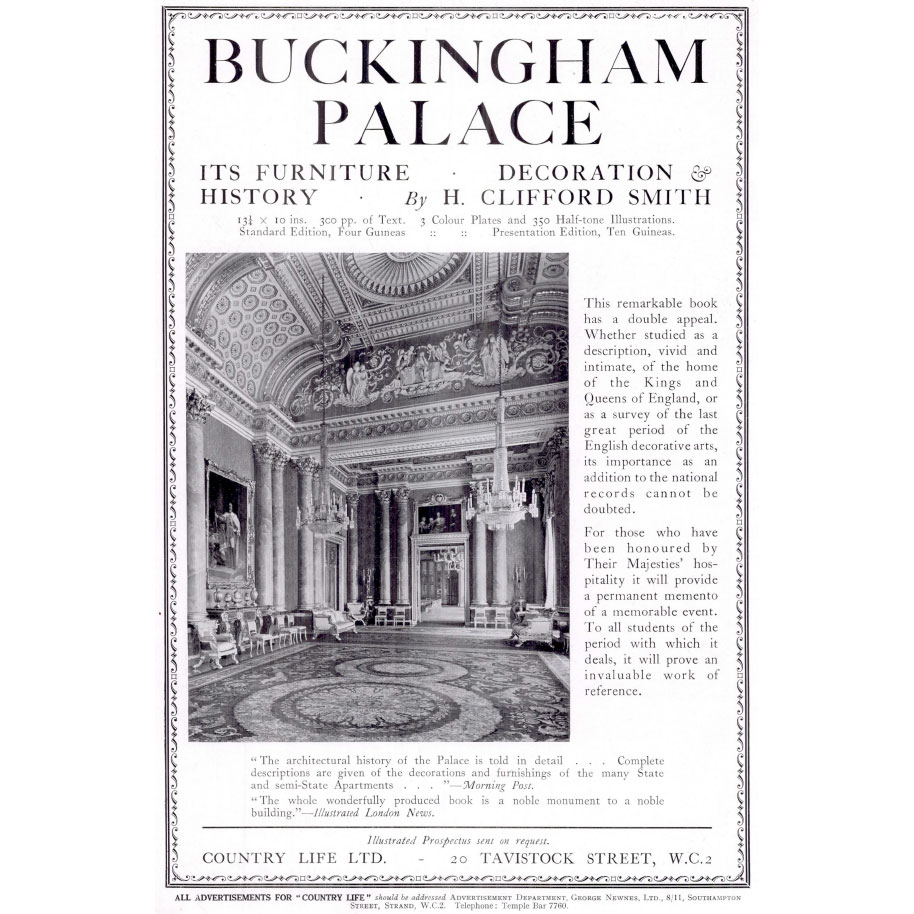 Buckingham Palace: 'There is not a historical capital in Europe which cannot show a more imposing Royal palace'
Buckingham Palace: 'There is not a historical capital in Europe which cannot show a more imposing Royal palace'A trip through the archives unearths a real treasure in the form of a 1931 book about Buckingham Palace which offers a fascinatingly different perspective on one of the world's most famous buildings.
By Toby Keel Published
-
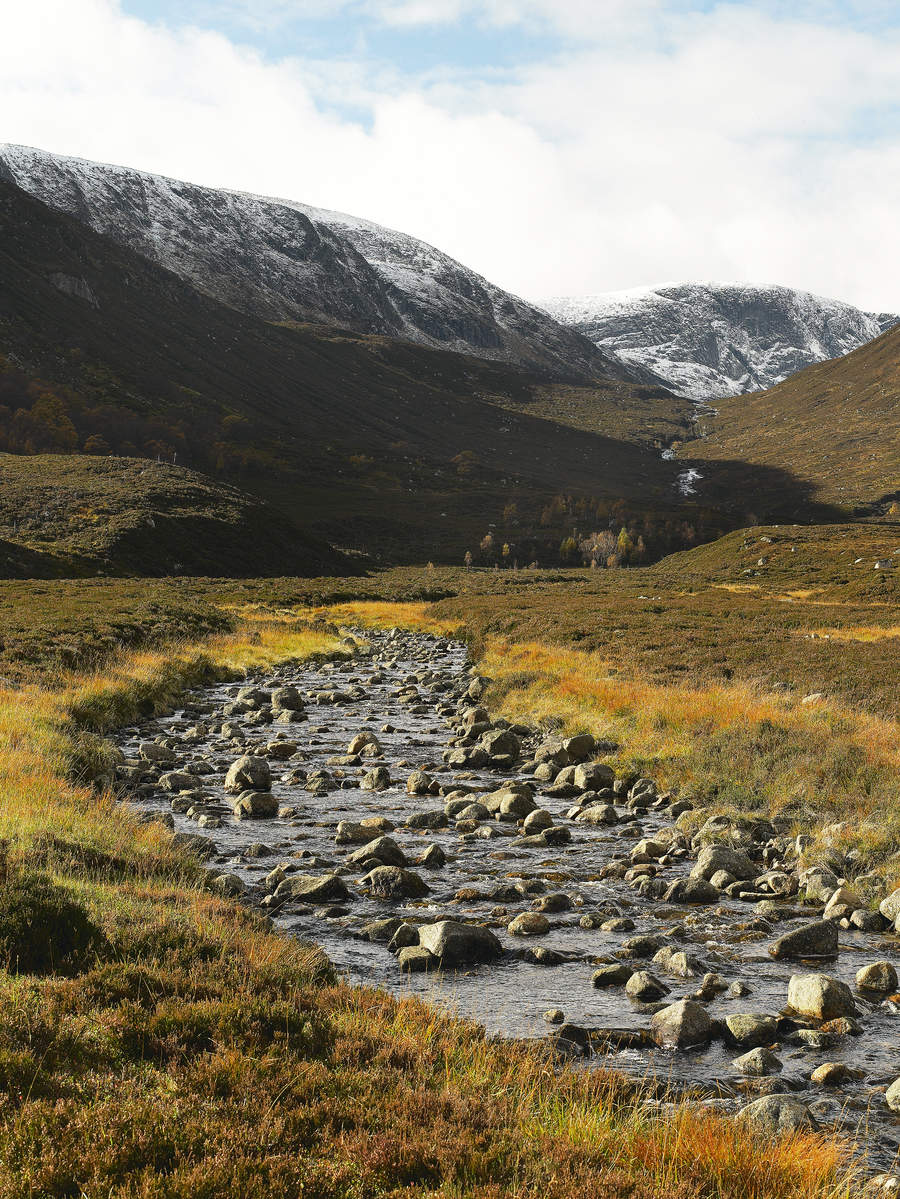 Balmoral: A Highland paradise, and the much-loved royal family summer escape since 1848
Balmoral: A Highland paradise, and the much-loved royal family summer escape since 1848Mary Miers takes a look at a much-loved home of the Royal Family, Balmoral.
By Mary Miers Published
-
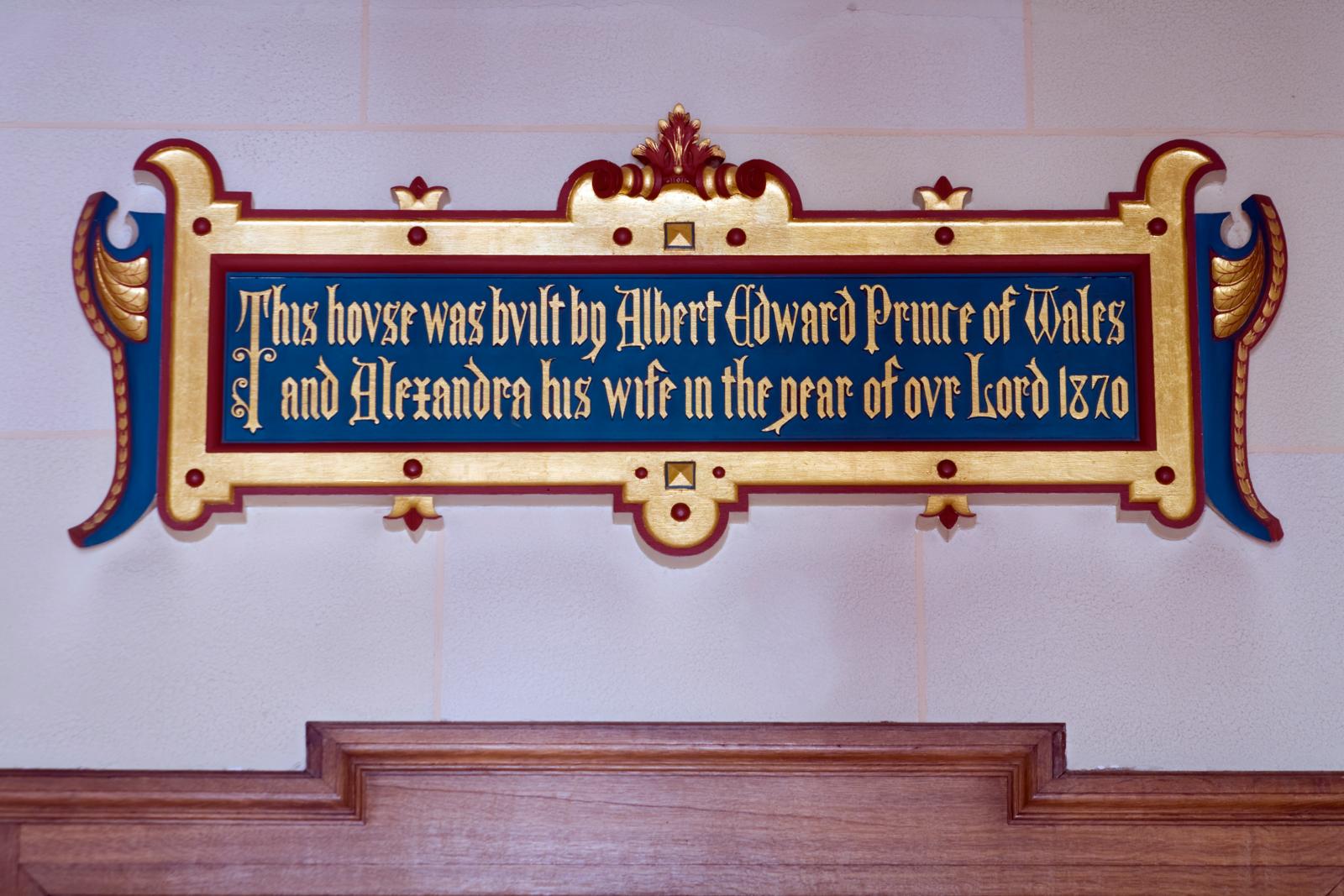 Sandringham House: The Norfolk home of The Queen
Sandringham House: The Norfolk home of The QueenJohn Martin Robinson takes a tour of Sandringham House, the country house beloved and developed by generations of the royal family, including rooms not seen by the public. Photographs by Will Pryce for Country Life.
By John Martin Robinson Published
-
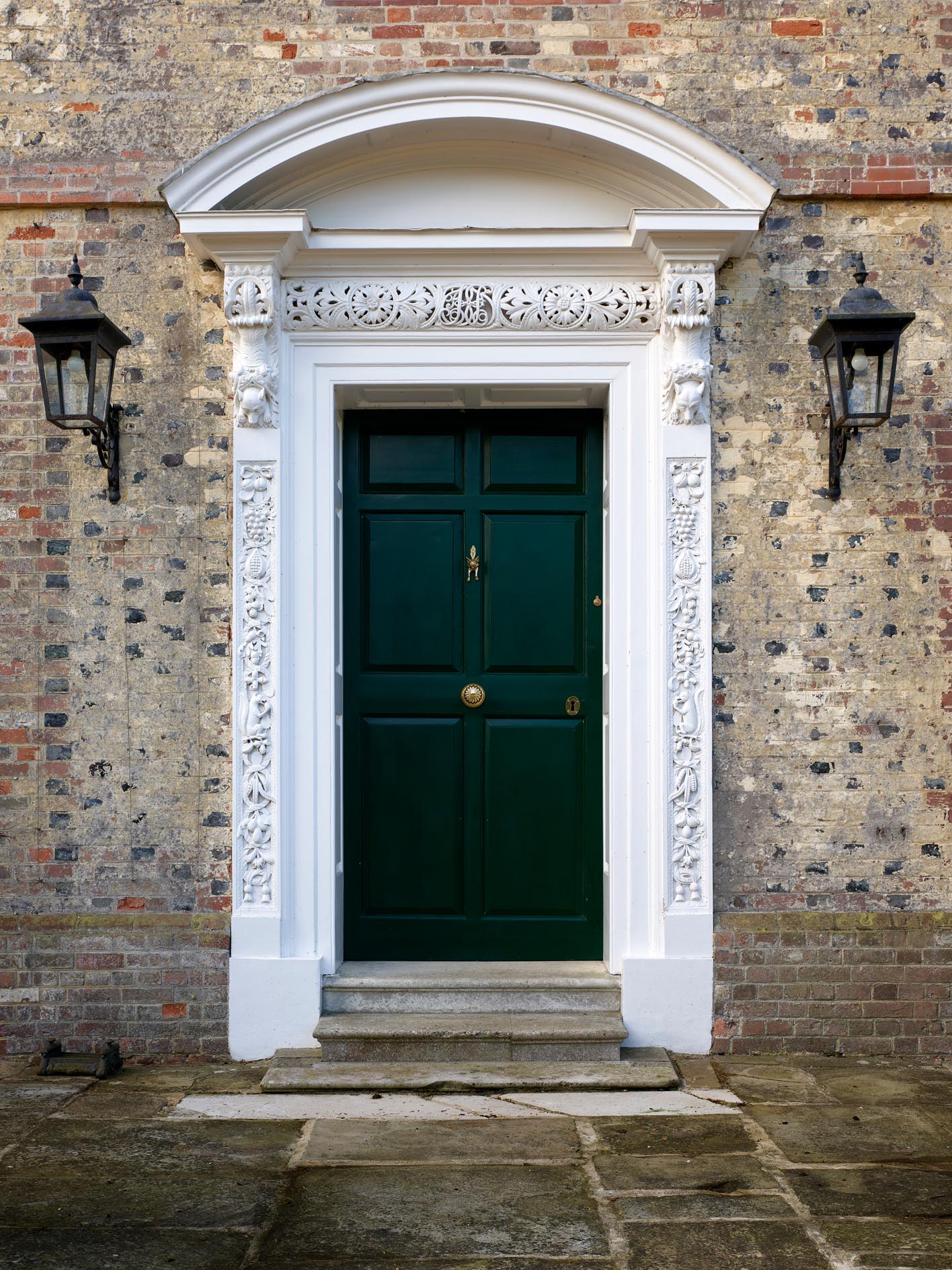 Hall Place, Hampshire: The fabulous house where the Duchess of Cornwall spent her idyllic childhood summers
Hall Place, Hampshire: The fabulous house where the Duchess of Cornwall spent her idyllic childhood summersHall Place in West Meon, Hampshire, is currently the home of Michael and Claudia Langdon. Yet for many years it was owned by the grandparents of HRH The Duchess of Cornwall. The house, so well known to The Duchess in her childhood, was specially chosen by her for coverage in her guest-edited issue of Country Life. It is revealed in a new light by fresh documentary research, as John Goodall reports. Photographs by Paul Highnam for Country Life.
By John Goodall Published